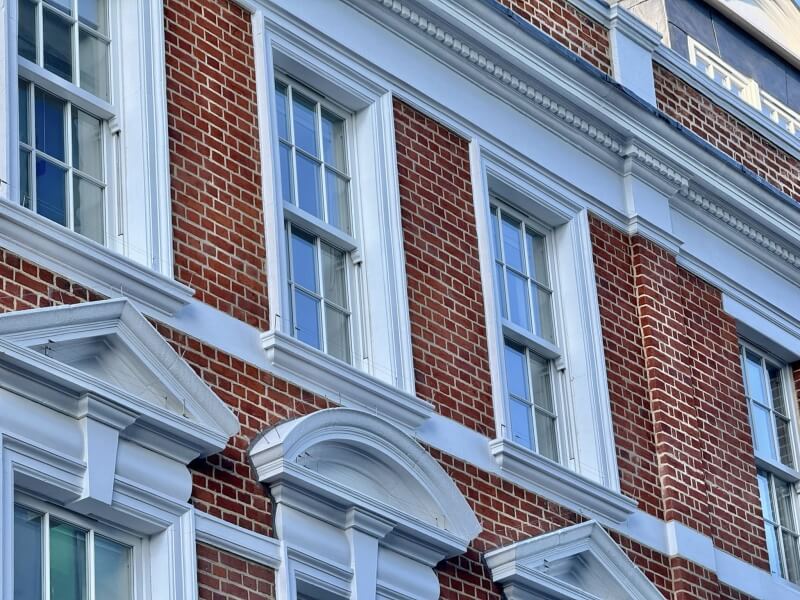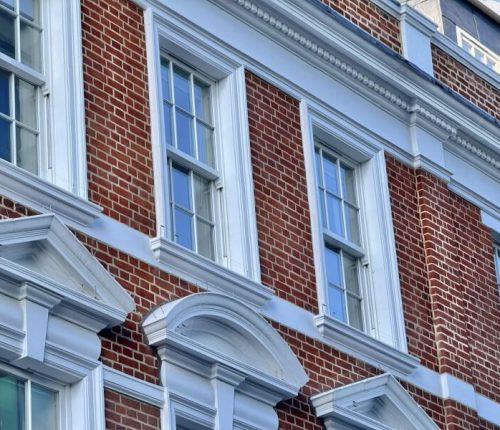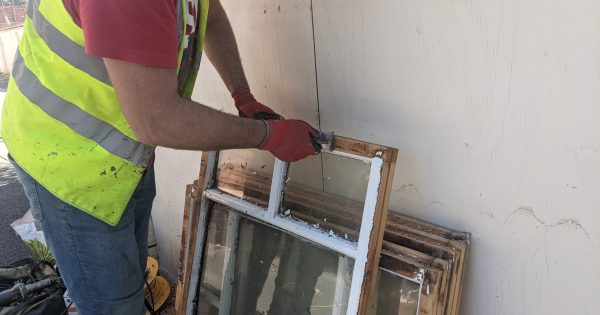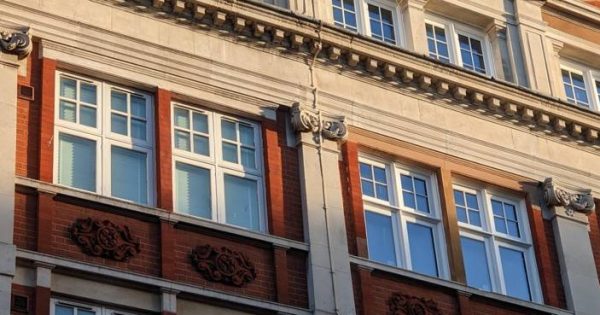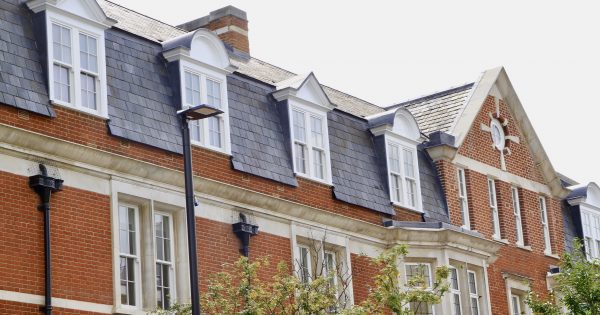Fri May 9
Upgrading the windows of historic and listed buildings is one of the most effective ways to improve energy efficiency and comfort. However, for architects and developers working on large-scale restoration projects, the decision between secondary glazing and double glazing is rarely straightforward. Each approach offers distinct advantages in terms of thermal insulation, cost, and suitability for heritage properties.
In this guide, we draw on TRC Contracts’ wealth of experience to help you make an informed choice for your next project.
Understanding the key differences
What is secondary glazing?
Secondary glazing is the installation of an independent barrier – typically an internal secondary window – behind the existing single glazed windows. This secondary unit can be a pane of glass, a transparent sheet of plastic, or even a secondary glazing film, fitted within an aluminium frame or wooden secondary glazing system. The air gap created between the original and secondary panes acts as an insulating barrier, significantly reducing heat loss and noise pollution.
Types of secondary glazing include:
- Fixed or lift-out panels
- Hinged units
- Sliding systems
- Magnetic secondary glazing (using magnetic strips for easy removal)
TRC Contracts offers bespoke secondary glazing solutions designed to suit all types of windows, including sash windows and casement windows, with options for both permanent and removable installations.
What is double glazing?
Double glazing involves replacing the existing single glazed window with a new unit containing two sheets of glass separated by an air gap or filled with an inert gas such as argon or krypton. This sealed unit is then fitted into a new or existing frame, creating a highly effective insulating barrier. TRC Contracts’ double glazed sash windows use advanced slimline profiles and can be tailored to match period details, making them suitable for sensitive restoration projects.
Secondary glazing vs double glazing: How do they compare?
| Factor | Secondary Glazing | Double Glazing |
| Heat loss reduction | Up to 70% | Up to 90% |
| U-value | 1.8–2.5 W/m²K | 1.1–1.4 W/m²K |
| Condensation risk | Low (separates warm/cold air) | Moderate (edge seals can degrade over time) |
Figures based on Historic England guidance and TRC Contracts’ in-house testing (2025).
Double glazed windows provide the highest level of thermal efficiency, especially when using modern inert gas-filled units. However, secondary glazing can still deliver a substantial improvement over single glazed windows, particularly in listed buildings where replacing the original panes of glass is not permitted.
The role of air gaps and inert gas
The effectiveness of both types of glazing depends on the insulating barrier created between separate pieces of glass. In double glazing, the air gap (usually 12–16mm) is often filled with an inert gas, which slows heat transfer. In secondary glazing, the air gap can be much wider (up to 100mm), which greatly improves both thermal insulation and acoustic insulation.
Acoustic insulation: Reducing noise pollution
Both secondary glazing and double glazing can reduce external noise, but secondary glazing is often more effective for heritage properties. The larger air gap and independent barriers disrupt sound waves, offering up to 60% noise reduction – ideal for properties in busy urban areas or near transport links.
TRC Contracts’ secondary glazing solutions have been successfully installed in venues such as Blackpool Tower Ballroom, where they reduced noise levels by over 55dB without altering the original appearance of the windows.
Heritage and conservation: Listed buildings and conservation areas
Suitability for listed properties
Secondary glazing is the preferred solution for most listed buildings and conservation areas. It is fully reversible, requires minimal intervention, and does not alter the external appearance of the property. Planning authorities and Historic England generally support secondary glazing installation as it preserves the character of heritage assets.
Double glazing can be used in some listed properties, but only when strict conditions are met. TRC Contracts’ slim-profile double glazed units are designed to replicate the look of traditional sash windows, with matching astragal bars and putty lines. However, approval depends on the specific requirements of the local conservation officer.
Types of windows and glazing options
TRC Contracts provides secondary glazing and double glazing for all types of windows, including:
- Sash windows
- Casement windows
- Fixed and arched windows
We also offer triple glazing and acoustic glass for projects where maximum thermal and acoustic performance is required.
Which solution reduces heating bills faster?
Double glazing typically cuts heating bills by 20–30% compared to 10–20% for secondary glazing. However, secondary glazing’s lower upfront costs and planning flexibility make it preferable for time-sensitive heritage projects or where window replacement is not permitted.
Why Choose TRC Contracts?
- Wealth of experience: Over 30 years working with listed properties and conservation areas.
- Bespoke solutions: Custom-made secondary and double glazed units to suit any project.
- Proven results: Case studies from Grade I and II buildings, including Somerset House and Grosvenor House.
- Hybrid options: Combine secondary glazing with TRC’s Draftfix draught proofing system for maximum energy savings.
Next steps: Contact TRC Contracts
When it comes to secondary glazing vs double glazing, there is no one-size-fits-all answer. The best solution depends on your project’s energy efficiency goals, heritage requirements, and budget. With TRC Contracts’ expert guidance, you can achieve outstanding thermal performance while preserving the character of your historic building.
If you’re planning a restoration or refurbishment project, our team can help you assess the best glazing solution for your needs. Contact our team today for in-depth site surveys, technical advice, and access to BIM objects and detailed specifications for your project.

